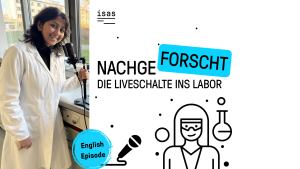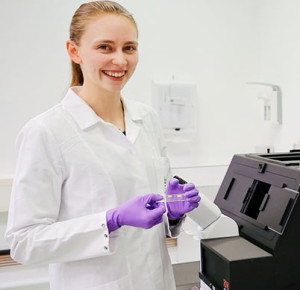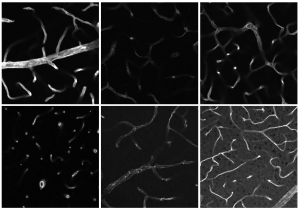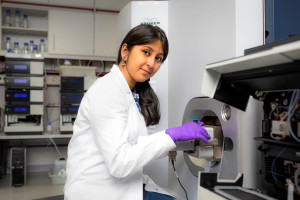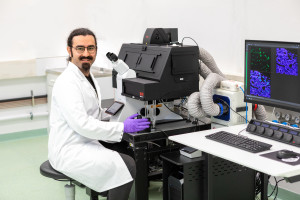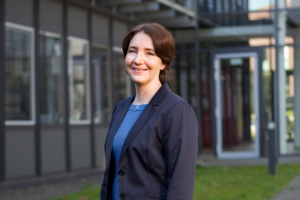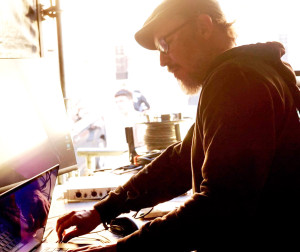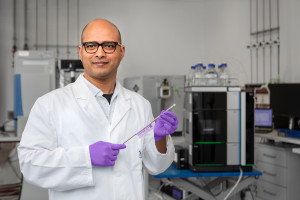Dortmund, 25th June 2025
Mass spectrometry is one of the most important analytical methods in medical chemistry. It works only with particles that are electrically charged – or ionised, to be more precise. Ionisation is often achieved using a plasma, an excited gas. Researchers like to use noble gases for this, traditionally in particular helium. More recently, however, the availability of helium has been affected by supply bottlenecks and sharp price increases. Until now it has also been unclear exactly how ionisation works in a plasma. However, ISAS scientists have published a series of studies that not only shed new light on the ionisation mechanism, but have also led to a new variant.: Their 'closed microtube plasma' (CµTP) works without a continuous supply of gas, making it particularly resource-efficient.
For ionisation by plasma, one technique used by researchers is dielectrically impeded discharge, in which two metal electrodes are insulated from one another by a suitable material and connected to an alternating voltage. An electrically conductive plasma then forms in the gas space between the electrodes even at room temperature. One variant of this is the “flexible microtube plasma” (FμTP) developed at ISAS. With this method, the plasma is generated in a fine, flexible glass capillary through which a noble gas continuously flows. At the end of the capillary and therefore outside the plasma, sample molecules can be added and ionised in a particularly gentle or 'soft' way. This is particularly important when analysing medically relevant large molecules such as proteins and lipids. With other analytical methods, these would easily disintegrate, thus making their identification by mass spectra difficult or even impossible.
Noble gases such as helium are particularly suitable for soft ionisation, as they are chemically inert and therefore do not react readily with other substances. In addition, metastable helium atoms – helium atoms that have an excited state with a very long lifetime – can effectively ionise other molecules. For years, researchers had assumed that soft ionisation took place as a chain of collisions. During “Penning ionization”, metastable atoms or molecules collide with nitrogen molecules from the surrounding air. The resulting positively charged nitrogen ions collide and ionise with water molecules in the air, which in turn ionise the substances under investigation through further collisions. “This is the mechanism that is described in textbooks,” says Luisa Speicher, doctoral candidate in the Miniaturisation research group.
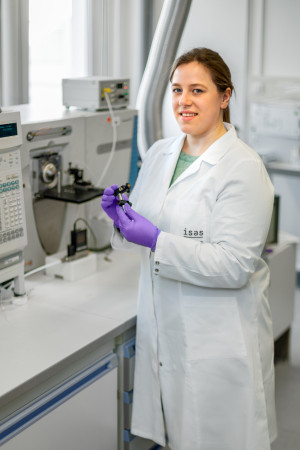
Luisa Speicher, doctoral candidate in the Miniaturisation research group, knows the mass spectrometers and ionisation sources at ISAS inside out.
© ISAS / Hannes Woidich
The explanation seemed plausible, since a helium plasma has a high energy level and can effectively transfer this energy to the nitrogen and water molecules with their lower energy. However, experiments have repeatedly shown that noble gases such as krypton and xenon also ionise analytical substances well in a plasma. However, the energy levels of these gases are too low to excite nitrogen as described – so the old theory could not apply to all noble gases.
Like a series of stop-motion shots
In order to find out what really happens, the scientists in the Miniaturisation research group developed an analytical method called Plasma Optical Emission Phoresis Spectroscopy (POEPS). This enabled them to monitor exactly how the charged and excited particles in the plasma are activated in time and space in an FμTP for the first time. The method works rather like a series of stop-motion shots. Firstly the researchers record the glow emitted by the plasma. This glow contains different colours (wavelengths), as each type of particle in the plasma emits light with characteristic colours when excited – rather like fireworks in which different chemical elements produce different colour effects. The scientists use a special camera to record these coloured light signals and to determine precisely when and where which colour appears and with what intensity.
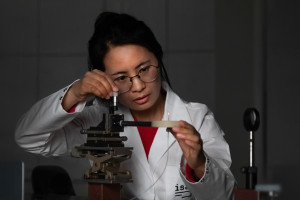
Caiyan Tian, doctoral candidate in the Miniaturisation research group, often works in the dark to record the glow of the plasma.
© ISAS / Hannes Woidich
The researchers analyse the images in two different ways. In the first analysis, they consider the temporal dimension – how the brightness of the different colours changes over time. This tells them in which order and with what dynamics the different particles in the plasma are activated. In the second analysis, they concentrate on the spatial dimension – at which points in the thin glass tube the particles become energised or electrically charged. “This approach makes it easier to observe even small differences which, in the two-dimensional colour representations that are otherwise used, are superimposed,” explains Caiyan Tian, doctoral candidate in the Miniaturisation research group. The scientists published their new method in the journal Spectrochimica Acta Part B: Atomic Spectroscopy.
The POEPS measurements indicate that the ionisation outside the capillaries is not caused by collisions between gas particles of the plasma and the ambient air, but rather by a short-term localised change in potential. The researchers elaborated on this hypothesis in the journal Analytical and Bioanalytical Chemistry , in which they explained that ions are deposited on the glass wall within the plasma capillary and polarise the glass. The resulting electric field is strong enough to ionise molecules outside the capillary by electron impact.
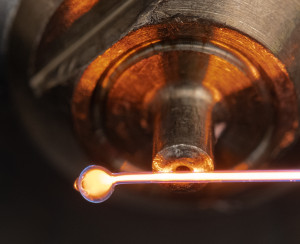
The closed µ-tube plasma (CµTP) completely encloses the diagnostic gas, in this case neon. This means that it does not require a continuous gas flow, is cheaper than its predecessor and is also portable.
© Daniel Foest
For the test, the scientists used helium instead of ambient air as a “diagnostic gas” outside the plasma capillary. They observed that the helium was excited even through a glass wall – a clear indication that it was not the direct contact between the plasma gas and the environment that caused the ionisation. The glass wall also rules out other possible mechanisms such as photoionisation, says Speicher. “If photons caused the ionisation, we would no longer be able to observe any effects through the glass wall.” The group has also published the experiment in the journal Analytical and Bioanalytical Chemistry. Based on their findings, the ISAS researchers developed an even more efficient plasma source for mass spectrometry. Whereas in the FμTP, gas constantly flows through the capillary and the plasma that builds up partially escapes from the tube, it was now possible to completely enclose the plasma in a closed glass tube. “At some point we came up with the idea that we could weld the tube completely closed – almost like a miniature fluorescent tube,” summarises Speicher.
The new closed µ-tube plasma, CµTP, achieves a similar ionisation efficiency to the previous technology – but without the need to continuously supply gas. “That makes the ionisation source not only more cost-effective, but also portable,” says Tian. “It's so compact that it can even be combined with other ionisation sources as an additional ionisation module.” The new technology, presented in the journal Analytical and Bioanalytical Chemistry, has already been patented. The researchers are now working on optimising the new microplasma source for imaging mass spectrometry.
Economical ion source
An ion source that works without a continuous gas flow could be significant not only scientifically but also economically. In some cases the price of helium has doubled in recent years, and some laboratories have even had to shut down equipment at times because the gas was rationed.
(Ute Eberle)
